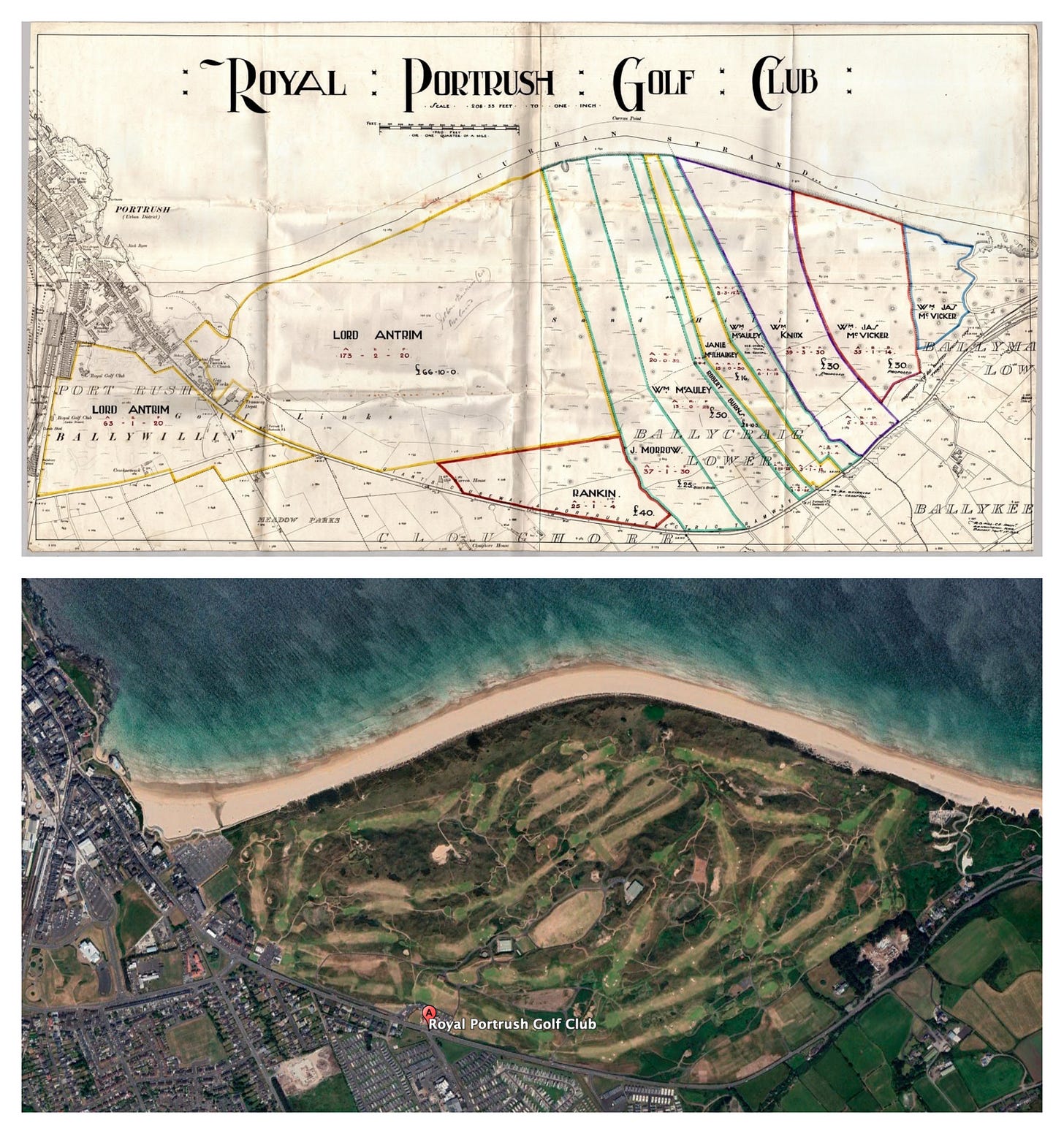The Internal Debate
Part I of a look at Royal Portrush, the philosophy of out-of-bounds, and how stroke and distance could impact the 2025 Open.
Oakmont’s clubhouse was “in bounds” at the recently completed U.S. Open. There were no visible white stakes on the golf course side of the stately green structure. And no painted lines. Meaning there was no penalty stroke for landing a shot into someone’s vodka tonic. (I can’t speak to the playability of the lie.)
This month for The 153rd Open, a few nondescript acres between Royal Portrush’s first and 18th holes will remain marked off with white stakes and painted lines. They will indicate, in less than subtle fashion, something referred to as “historic” out of bounds. This, despite the land being controlled by the club, and no apparent safety issues necessitating the slalom course of white stakes.
When Rory McIlroy hit his opening tee shot out-of-bounds en route to a quadruple bogey eight, the 2019 Open Championship highlighted a Calamity Corner-sized chasm in how the R&A and USGA treat boundary lines. The different views of the partners-in-rulemaking highlight one of the times when America’s approach to the rules emphasizes playing the ball as it lies at all costs—even if it could have meant bothering someone on the Oakmont patio—while providing a highly visible example of the UK’s tolerance of faux boundaries.
In Part I we’ll look at the backstory of Portrush’s boundaries and why they remain long after the cattle have moved on to other grazing pastures.
Royal Portrush is magnificent. No one disputes its place atop various lists of best courses. The Dunluce Links will host the Open for a third time and is as complete as any course in the rota. The Old Tom Morris original was masterfully redesigned by H.S. Colt, and more recently, given two new holes by Martin Ebert. It offers everything a golfer could ask for: variety, beauty, grandeur, changes in pace, uphill holes, downhill holes, greens of all sizes, and a quietly relentless set of holes rewarding skill without resorting to gimmickry. The course has a natural boundary that is totally accepted by golfers on the fourth hole, another somewhat iffy “OB” down the right of the par 5 second, the safety-driven boundary line behind the fifth green where the ocean awaits, and the seemingly random area at the first and 18th. These are kept to honor the past, minus the barbed wire fencing.
For a course that has evolved in so many ways and disregarded history in search of improvement, the devotion to history is on a case-by-case basis. Remember that the club also added two new holes and abandoned its two finishing holes in order to be able to host the Open’s various revenue-making needs.
The Dunluce’s faux boundary areas do not spoil the design. They’re just random, forced imperfections. Like a few easily fixable glitches in an otherwise epic film.
Here’s the history: the owner of the Rankin plot (in red above) leased the land to farmers. Lease issues have been an unusual part of the course’s lore. In H.S. Colt's reworking, the 1st and 18th holes had to be abandoned in 1946 when a lease was not extended, prompting the addition of two new holes closer to the cliffs (today’s 10th and 11th holes). The plot in question for this year’s first and last holes of The Open did not come under club control until later last century.





